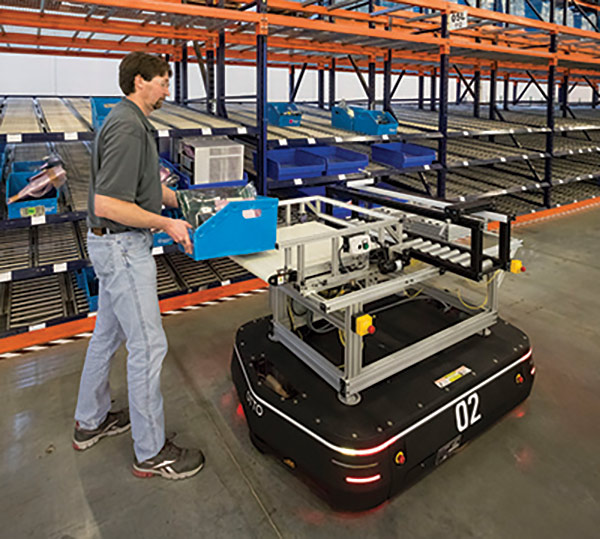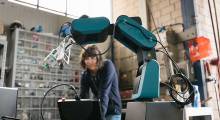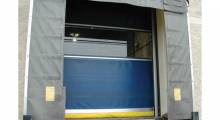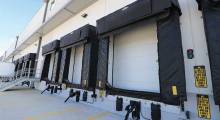GE Healthcare Repair Operations Center
Oak Creak, Wisc.
Size: 280,000 square feet, expanding to 330,000
Products: Repair of medical devices
Throughput: 2,000 repairs per week
Employees: 150
Shifts per Day/ Days per Week: 1 shift per day, 5 days per week
At GE Healthcare’s repair operations center, or ROC, in Wisconsin, self-driving vehicles are the centerpiece of an automated Kanban, delivering repair parts and equipment through the facility.
(See Layout below)
Receiving
Medical devices and repair parts arrive at the receiving dock (1) and are scanned in a receiving processing area (2). GE Healthcare’s management system determines whether the received item is needed at one of the repair cells (3), can go into flow racks in the receiving area (4) or into a raw materials or components storage area (5).
Retrieval and replenishment
The self-navigating vehicles are directed by a software system that is connected to individual repair cells (3). When a technician is ready for a task, he logs onto a Web page on his computer. From there, the technician can choose whether he needs a piece of equipment to repair (4); has finished a repair that needs to go to packaging (6) and shipping (7); or needs to replenish a bin of raw materials used for repairs (5).
Raw materials
To maintain a lean operation, only two bins of repair parts and raw materials are maintained in racks at the repair cells (3). When one bin is empty, a technician loads it onto one of the self-driving vehicles, which delivers it to a stock room (5). There, an associate scans the bin and fills it with the required materials. The full bin is delivered to the appropriate repair cell (3), where a technician places it into a storage location.
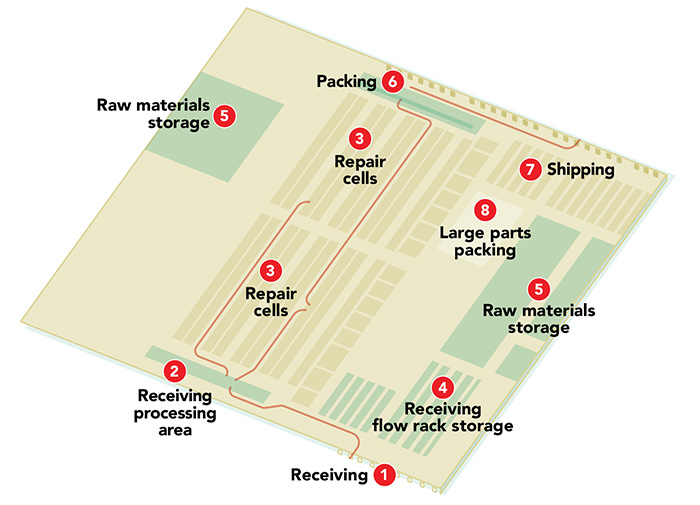
Parts for repair
When a technician signals that he is ready for a part to repair, the self-driving vehicle travels to a flow rack location in receiving (4). An associate loads a part onto an appliance that holds the part in place during travel. The vehicle then delivers it to the appropriate repair cell (3).
Repaired parts
Once a machine is ready for packing (6), a technician loads the repaired part onto an appliance on the self-driving vehicle. At the assembly station, a technician loads a repaired part into the appliance. The vehicle automatically transfers the appliance onto a conveyor in the packing area (6). In packing, an associate scans the item and uses the on-demand packaging system to create the right box for shipping. Once a shipping label is printed and applied, the part is staged by parcel carrier (7) according to the shipping requirements. Larger parts—some can weigh as much as 400 pounds—are handled in a separate packaging area, where they are loaded by crane into a shipping container.
Systems Suppliers
Self-navigating Vehicle:OTTO Motors
Lift Trucks: Yale
Bar Code Scanning: Zebra Technologies
Packaging System: Box On Demand
Article topics
